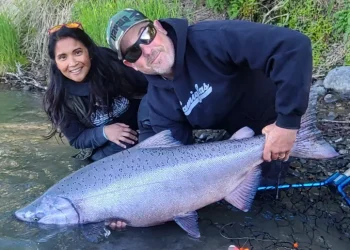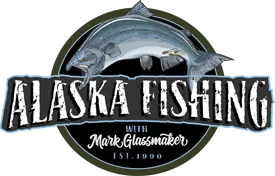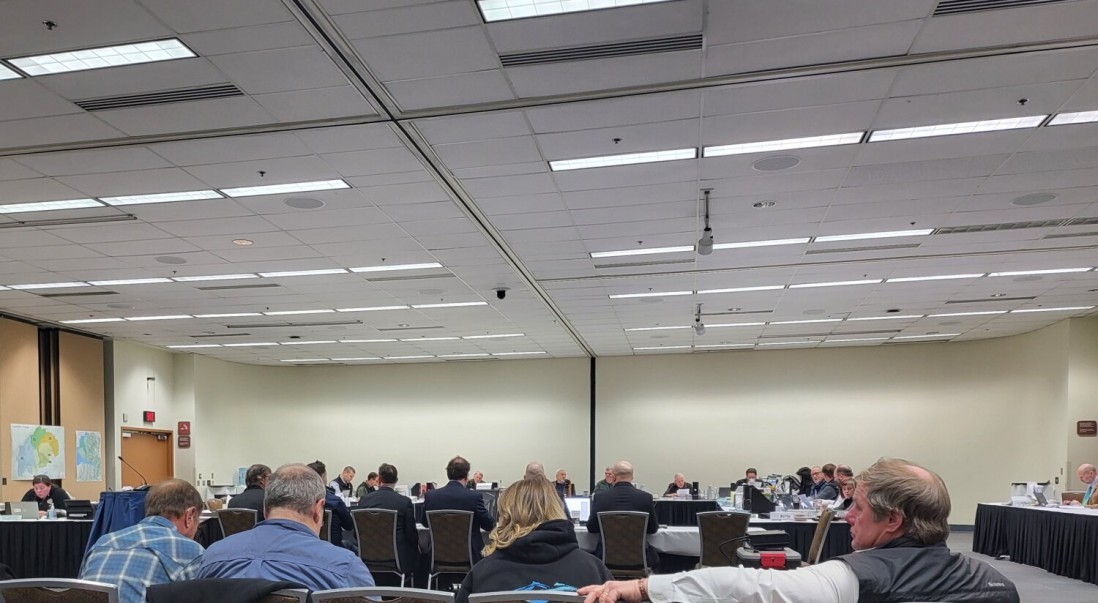2024 Upper Cook Inlet Board of Fisheries Meeting: February 23 – March 5, 2024
Summary of actions at the 2024 Upper Cook Inlet Board of Fisheries Meeting as it pertains to the sportfishing angler visiting the Kenai Peninsula for the next three seasons.
The most significant action taken at Upper Cook Inlet Finfish Meeting: Feb 23-March 5, 2024 is in response to the stock of concern status for Kenai River Late Run King Salmon and the Kenai River Late Run King Salmon Action Plan for recovery of the stock.
The action plan includes the following:
Kenai River Late-Run King Salmon stock of concern action plan: 5 AAC 21.XXX. Kenai River Late-Run King Salmon stock of concern management plan. (a) The department shall manage the late run of Kenai River king salmon to achieve a recovery goal of 14,250 – 30,000 king salmon 75 cm mid eye to tail fork and longer as described in this section. Achieving the lower end of the Kenai River late-run king salmon recovery goal shall take priority over not exceeding the upper end of the escapement and in-river goal ranges for Kenai and Kasilof River sockeye salmon.
(b) The purposes of this management plan are to rebuild the Kenai River late-run king salmon stock to levels that consistently achieve management targets established by the board and provide sustainable harvest opportunity. The provisions of this management plan are in effect from June 20 through August 15, and supersede the provisions in 5 AAC 21.359 until the recovery goal is achieved or exceeded for three consecutive years, one of which is at or above 18,000 fish, which is the estimated number of spawners needed for maximum sustained yield (Smsy) and is expected to achieve the goal in future years, or is achieved four of six consecutive years, one of which is at or above 18,000 fish and is expected to achieve the goal in future years. The Kenai River late-run king salmon will remain a stock of concern until the department recommends delisting to the board at a Board of Fisheries meeting.
(c) In order to achieve the recovery goal and provide reasonable harvest opportunity, the commissioner may, by emergency order, establish fishing seasons as follows:
(1) in the Kenai River sport fishery,
(A) retention of king salmon 34 inches or greater in length as defined in 5 AAC 75.995 (a) is prohibited; or
(B) retention of king salmon is prohibited.
(d) In the Kenai River sport fishery,
(1) the Kenai River is closed to sport fishing for king salmon; a king salmon that is caught must be released immediately; a person may not remove a king salmon from the water before releasing the fish;
(2) from July 1 through August 15, a person may not use more than one unbaited, single-hook, artificial lure in the Kenai River downstream from an ADF&G regulatory marker located at the outlet of Skilak Lake;
(3) the bag limit for Kenai River sockeye salmon is six per day, 12 in possession;
(4) that portion of the Kenai River downstream from an ADF&G regulatory marker located at the outlet of Skilak Lake is open to unguided sport fishing from a nonmotorized vessel on Mondays in July; for purposes of this paragraph, a ‘nonmotorized vessel’ is one that does not have a motor on board.
(e) In the salt waters of Cook Inlet, the sport fisheries in the salt waters of Cook Inlet north of the latitude of Bluff Point are closed to the taking of king salmon.
(f) In the Central District Drift fishery, the commercial drift gillnet fishery in the Central District is closed within two miles of the Kenai Peninsula shoreline.
(g) In the Upper Subdistrict of the Central District set gillnet fishery,
(1) From June 20 – June 30, when the preseason forecast, including harvest and forecast error, of king salmon 75 cm mid eye to tail fork and longer is greater than 14,250 large fish, the Upper Subdistrict set gillnet fishery may be opened as follows:
(A) each setnet permit holder may use up to one set gillnet that is not more than 35 fathoms in length and 29 meshes in depth;
(B) are open for no more than two eight hour periods;
(C) with a 48-hour continuous closure per week beginning between 7:00 p.m. Thursday and 7:00 a.m. Friday;
(D) fishery openings shall be based around tides based upon Seldovia District Tide Tables by section as follows: Ninilchik River Mouth to Kasilof River Mouth plus 3 hours from Seldovia District low tide (Stat Areas 244-21, 24422), KasiIof River Mouth to Kenai River Mouth plus 4 hours from Seldovia District low tide (Stat Areas 244-31);
(2) From July 15 – July 27, when the inseason projection, including harvest and projection error, of king salmon 75 cm mid eye to tail fork and longer Page 2 of 4 Member Carlson-Van Dort Stock of Concern Action Plan RC183 is greater than 14,250 large fish, the Upper Subdistrict set gillnet fishery may be opened as follows:
(A) each setnet permit holder may use up to one set gillnet that is not more than 35 fathoms in length and 29 meshes in depth;
(B) are open for no more than four eight hour periods;
(C) with a 48-hour continuous closure per week beginning between 7:00 p.m. Thursday and 7:00 a.m. Friday;
(D) fishery openings will be based upon Seldovia District Tide Tables by section as follows: Ninilchik River Mouth to Kasilof River Mouth plus 3 hours from Seldovia District low tide (Stat Areas 244-21, 244-22), Kasilof River Mouth to Kenai River Mouth plus 4 hours from Seldovia District low tide (Stat Areas 244-31, 244-32), Kenai River Mouth to Boulder Point plus 5 hours from Seldovia District low tide (Stat Areas 244-41, 244-42);
(3) From July 28 – August 15, when the inseason projection, accounting for anticipated harvest, projection error and inseason run strength of king salmon 75 cm mid eye to tail fork and longer is greater than 14,250 large fish, the Upper Subdistrict set gillnet fishery may be opened as follows:
(A) each setnet permit holder may use up to one set gillnet that is not more than 35 fathoms in length and 29 meshes in depth;
(B) are open for no more than two eight hour periods;
(C) with a 48-hour continuous closure per week beginning between 7:00 p.m. Thursday and 7:00 a.m. Friday;
(D) fishery openings will be based upon Seldovia District Tide Tables by section as follows: Ninilchik River Mouth to Kasilof River Mouth plus 3 hours from Seldovia District low tide (Stat Areas 244-21, 244-22), Kasilof River Mouth to Kenai River Mouth plus 4 hours from Seldovia District low tide (Stat Areas 244-31, 244-32), Kenai River Mouth to Boulder Point plus 5 hours from Seldovia District low tide (Stat Areas 244-41, 244-42);
(4) in the Upper Subdistrict set gillnet commercial fishery, notwithstanding the provisions of 5 AAC 21.359, 5 AAC 21.365, and 5 AAC 21.360(c)(1)(B), (2)(B), and (3)(B), commercial fishing periods be based on the abundance of sockeye salmon returning to the Kenai and Kasilof Rivers.
(h) Notwithstanding 5 AAC 21.365 Kasilof River Salmon Management Plan, the Kasilof River Special Harvest Area (KRSHA) is closed to commercial fishing. Page 3 of 4 Member Carlson-Van Dort Stock of Concern Action Plan RC183
(i) All commercially harvested king salmon must be delivered only to a licensed shore based processor or floating processor as defined in 5 AAC 39.130(o) as required by AS 43.75.020.
(j) All commercially harvested king salmon shall
(1) be delivered only to a licensed shore based processor or floating processor as defined in 5 AAC 39.130(o) as required by AS 43.75.020; and
(2) retention of king salmon is required and made available to the department for sampling;
(k) All salmon caught by a CFEC permit holder must be retained, and each CFEC permit holder must report the number of salmon caught, on an ADF&G fish ticket. For the purposes of this subsection, “caught” means brought on board the vessel.
(5) From June 20 – July 31,
(A) Allow for the use of dip nets as an alternative gear type for holders of a SO4H commercial set gillnet CFEC permit;
(B) openings may occur outside of specified openings in this section based on abundance of sockeye salmon, as announced by emergency order for not more than three 12 hour periods per week;
(C) a S04H CFEC permit holder may operate no more than four dip nets at a time, each dip net must be operated by either the permit holder or ADFG licensed crewmembers;
(D) retention of king and coho salmon is prohibited;
(E) fishing with a dip net may occur from a vessel or from shore, if fishing from shore only at a shore lease site as permitted to an S04H CFEC permit holder by the Department of Natural resources as described in 5 AAC 11 AAC 64.
5 AAC 21.330. Gear.
5 AAC 21.330 is amended by adding a new subsection to read:
- Dip nets, as defined in 5 AAC 39.105(d)(24) may be used in the Upper Subdistrict of the Central District.
(l) In the Kenai and Kasilof Personal Use Fisheries
(1) in the Kenai river and Kasilof river personal use dip net fisheries, retention of king salmon is prohibited;
(2) a Kasilof River personal use set gillnet may not exceed 10 fathoms in length, four and three quarter inches in mesh size, and 29 meshes in depth.
(m) The department will, to the extent practicable, conduct habitat assessments on a schedule that conforms to the Board of Fisheries (board) triennial meeting cycle. The department is requested to report those findings to the board and submit proposals to the board for appropriate modification of this plan.
The important take aways from this new action plan include:
This plan supersedes the current Kenai River Late Run King Salmon Management Plan and will remain in effect until one of the two criteria required to qualify as recovered is met and the department recommends delisting:
“…until the recovery goal is achieved or exceeded for three consecutive years, one of which is at or above 18,000 fish, which is the estimated number of spawners needed for maximum sustained yield (Smsy) and is expected to achieve the goal in future years, or is achieved four of six consecutive years, one of which is at or above 18,000 fish and is expected to achieve the goal in future years.”
Given current ocean conditions and recent stock recruitments (the ability for the run to replace itself) this plan could be in effect for well over a decade. Meeting the goal three consecutive years or four of six years with one year exceeding 18,000 is a very high bar.
Department managers are unlikely to allow any opportunity in-river or in the East Side Set Net fleet for the foreseeable future. It is likely they will allow the new dip net only openers and the rate of participation and effective strength of this new fishery are unknown.
Other notable changes in-river (Kenai/Kasilof):
May and June:
Not many changes, the Kasilof will again be no retention of naturally produced king salmon but remains open to bait and retention of two hatchery king salmon per day, per person through June 30. The Kenai River will again be closed to all king fishing in both June and July in an effort to conserve both early and late run king salmon.
July:
Kenai River sockeye salmon limits were increased permanently from three to six fish beginning June 20.
August, September, and October:
The major change that occurred in August is a new regulation prohibiting the use of bait above the Moose River confluence with the Kenai: permanently. This historic step was taken to address coho mortality in their staging areas as well as rainbow trout mortality associated with bait.
If you are a Hidden Lake trout angler:
Hidden Lake is now closed to all fishing to protect spawning lake trout from September 15 to November 3.
For a complete Summary of Actions on all the proposals please see:

Mark and Cindy Glassmaker have been married for 28 years, and their business, Alaska Fishing with Mark Glassmaker, has been operating since 1990. Over the past 34 years guiding on the Kenai River, we’ve witnessed many changes. Through early diversification and the dedication of our entire guide staff and team, we’ve built and maintained what we believe is the premier Kenai River fishing experience.
We take great pride in our work and in the reputation our business stands for. Your trip becomes part of that legacy, and we are committed to making it exceptional. Every outing is approached with 100% effort and service, ensuring that your Alaska fishing trips not only meets but exceeds expectations.

